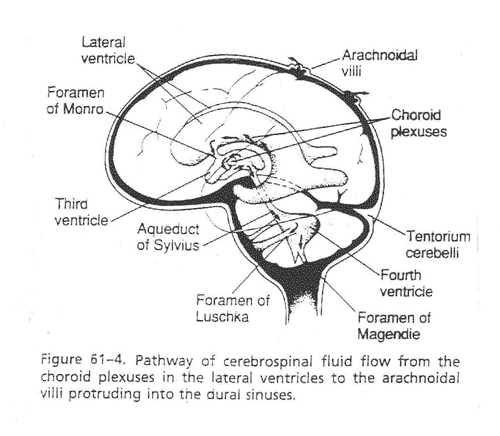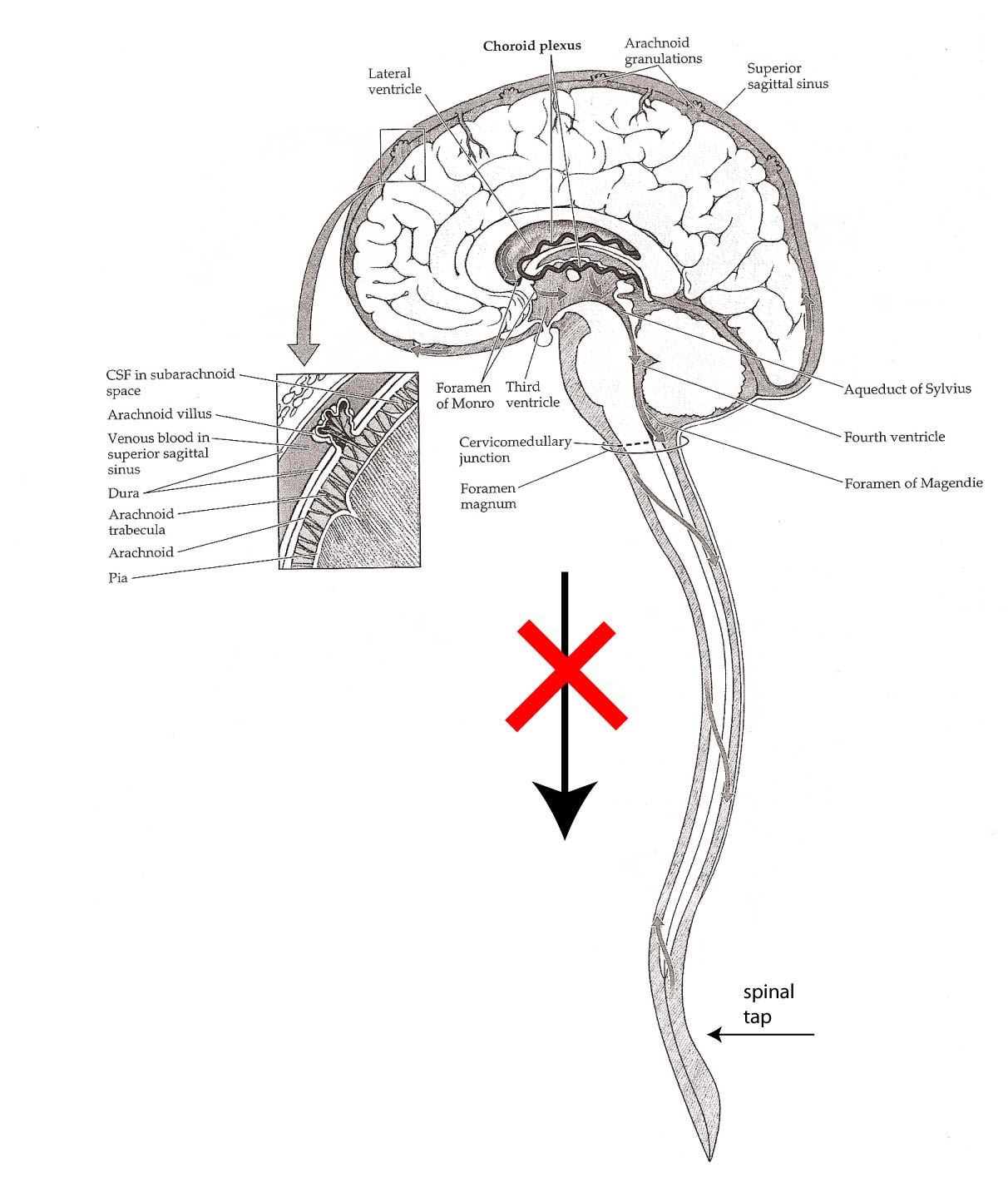B. The Cerebro Spinal Fluid and the CSF System:
|
|
1. CSF is required to nourish brain tissue and to protect the brain from blows to the head (floating brain), together with the skull. However, because of the inertia of the fluid and the brain, there is a potential danger of the “contrecoup” (brain damage at the other side of the blow). |
2. CSF is produced by the choroid plexuses located in all four ventricles. Every day about 500 ml CSF is produced. The total quantity in a normal brain is about 150 ml; there is therefore a 3-4x daily renewal of all CSF. |
3. CSF flows from the Lateral ventricles, through the foramen of Monro into the Third ventricle and, through the Aqueduct of Sylvius, into the Fourth ventricle. This ventricle is connected though two foramina of Luschka and the foramen of Magendie into the Cisterna Magna. From there, fluid flows through the (sub)arachnoidal space and reaches the arachnoidal villi. |
4. The arachnoidal villi work actually asvalves between the brain fluid and the venous system. If the brain fluid pressure is higher than the local venous pressure (about 10 mm Hg), then CSF will flow into the veins and back to the heart.
|
5. Measuring CSF pressure is done with a spinal tap. Buf before you do this, you MUST check for one thing!! |
6. The absence of papilledema. (indication of raised intracranial pressure -> risk of herniation of the brain stem -> acute death.
|

